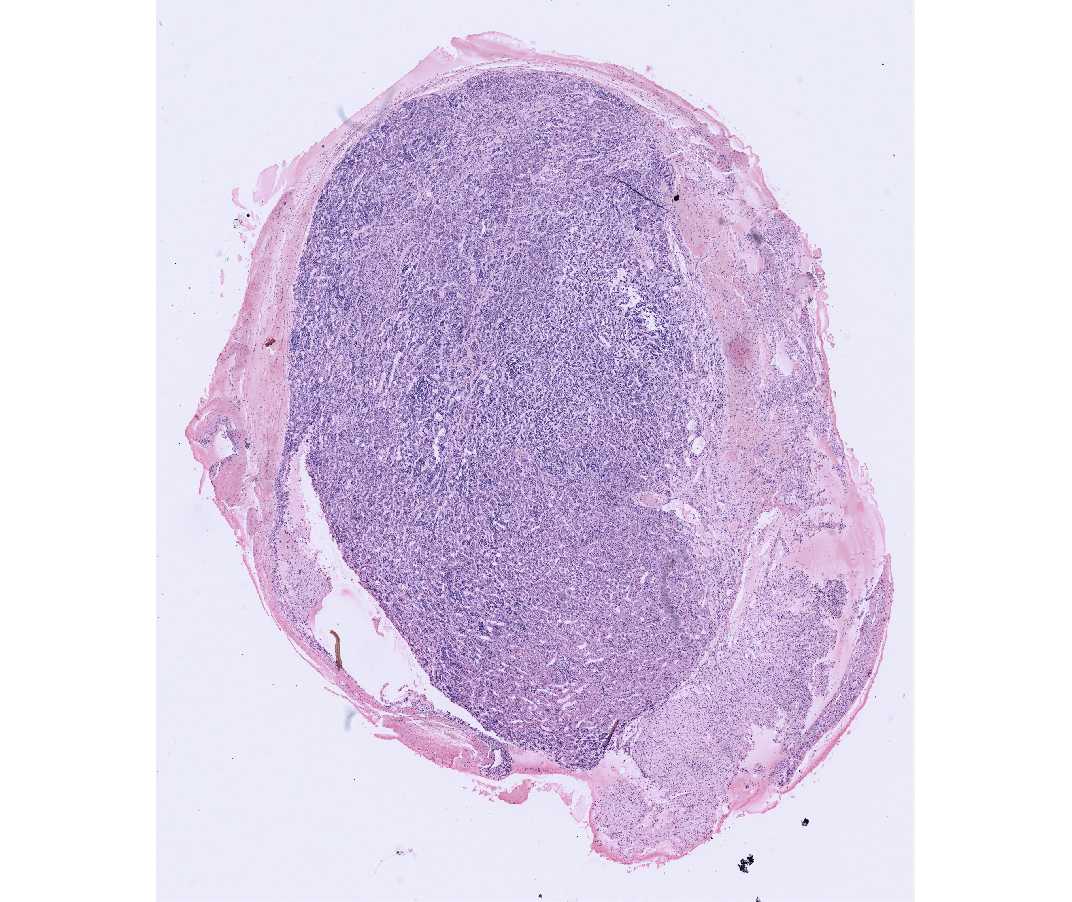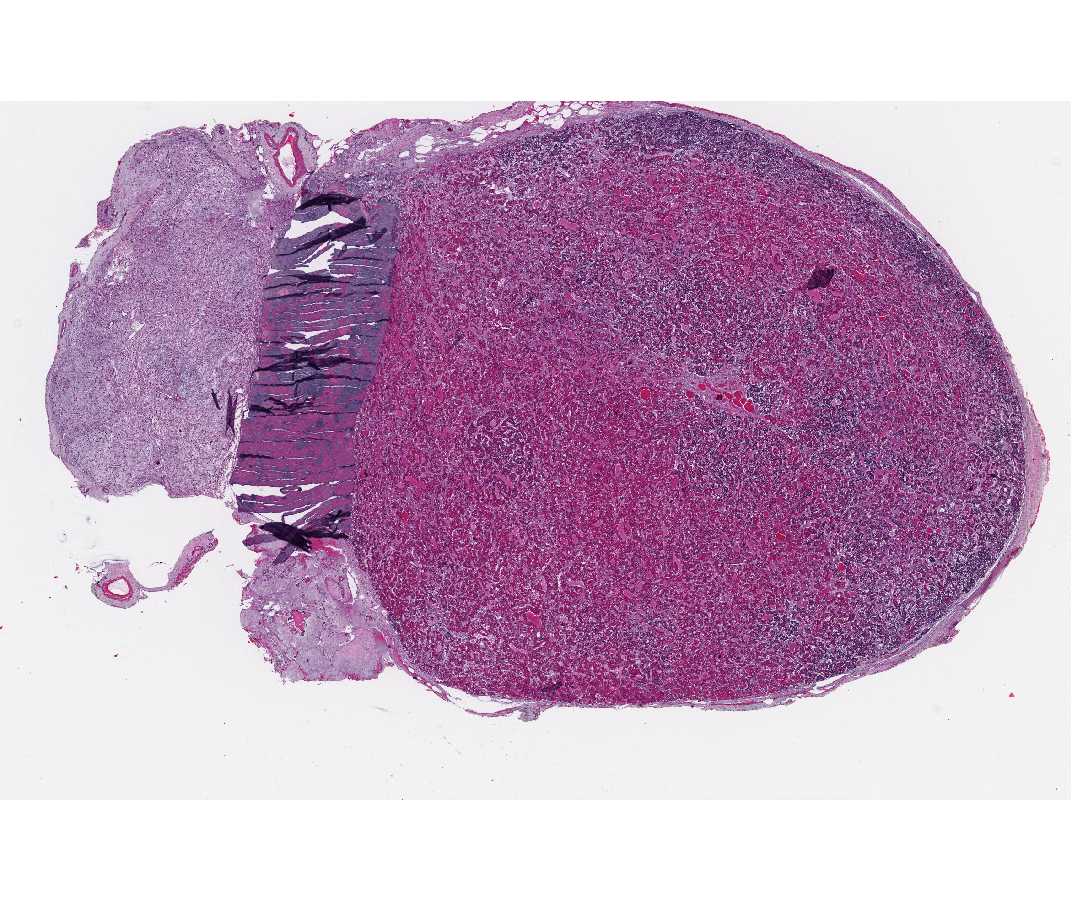SBPMD Histology Laboratory Manual
Pituitary Gland
The pituitary, or hypophysis, has been called the "master" gland because it controls so many bodily functions, but in fact, it is only a link in the body's neuroendocrine system. As such, its anatomical relationships to blood vessels and nerves are extremely important. The pituitary gland is a dual gland consisting of an epithelial component (adenohypophysis, anterior lobe, or pars distalis) and a neural component (neurohypophysis, or posterior lobe). The epithelial component is derived from an outgrowth of oral ectoderm known as Rathke's pouch. It meets and joins with a neuroectodermal downgrowth from the floor of the diencephalon (a portion of the central nervous system), the prospective neurohypophysis.
The relationships of the divisions of the pituitary gland to one another and the various terms used to describe the divisions of the gland are found in your textbook.
Each of the human pituitary slides in your collection has been stained with a different set of dyes. Examine each slide first by eye. The adenohypophysis will generally be the more brightly staining portion; the neurohypophysis will be less intense. With the scanning objective of your microscope identify the pars distalis, neurohypophysis and remnants of the pars intermedia (not present on all slides) with the aid of your text. Under higher magnification, identify different cell types in the anterior lobe of each preparation. Note the arrangement of the hormone-secreting cells along the fenestrated sinusoidal capillaries.
#73 Pituitary, Human (Masson's trichrome)
Open with WebViewer
With Masson's stain, the acidophils are red and the basophils are blue. Chromophobes will be light orange or faded to grey. Note that red blood cells may be anything from red to blue. The cords and clumps of epithelial cells are sharply outlined by the blue collagenous fibers. Note: When using Masson's trichrome or chrome alum-hematoxylin phloxin, the terms acidophils and basophils do not have the same meaning as when you use hematoxylin-eosin. The colors are dependent on the contents of the secretory granules. Acidophils synthesize growth hormone (GH, also known as somatotropic hormone) or prolactin (Prl, also known as luteotropic hormone); basophils synthesize luteinizing hormone (LH) and/or follicle stimulating hormone (FSH), thyroid stimulating hormone (TSH) or adrenal cortical stimulating hormone (ACTH). Chromophobes are thought to be acidophils or basophils in which the granules are depleted or are ACTH producing cells. The neuropil of the neurohypophysis is grayish and vacuolated. The red-pink nuclei belong to pituicytes (glial cells) and endothelia.
#74 Pituitary, Human. H&E
Open with WebViewer
You will now see basophilic cells and acidophilic cells in the adenohypophysis of this specimen; this is the stain used in most of your sections, the red or blue staining of the secretory granules is due to the acidophilia or basophilia of the hormone contained in the granules. Observe the neurohypophysis and the colloid (Rathke's) cysts of the pars intermedia (if present) on your slide. What kinds of cells are in the neurohypophysis?
#75 Pituitary, Human (Chrome-hematoxylin and Phloxin)
Open with WebViewer
Nuclei are purple-black, acidophils bright pink, basophils blue-black, chromophobes light blue to colorless. Note the regional variations in the distribution of the various cell types. Note also that in this pituitary there is a large colloid cyst.
Review the various hormones secreted by the basophils and acidophils (as defined in the trichrome stains) of the pars distalis.
This preparation demonstrates the Herring bodies (large magenta-stained swellings on the neurosecretory axons) in the neural lobe. You must use oil to distinguish these structures from nuclei. What do Herring bodies represent? What hormones might you expect to find in these structures?
Where are the hormones of the neurohypophysis synthesized?